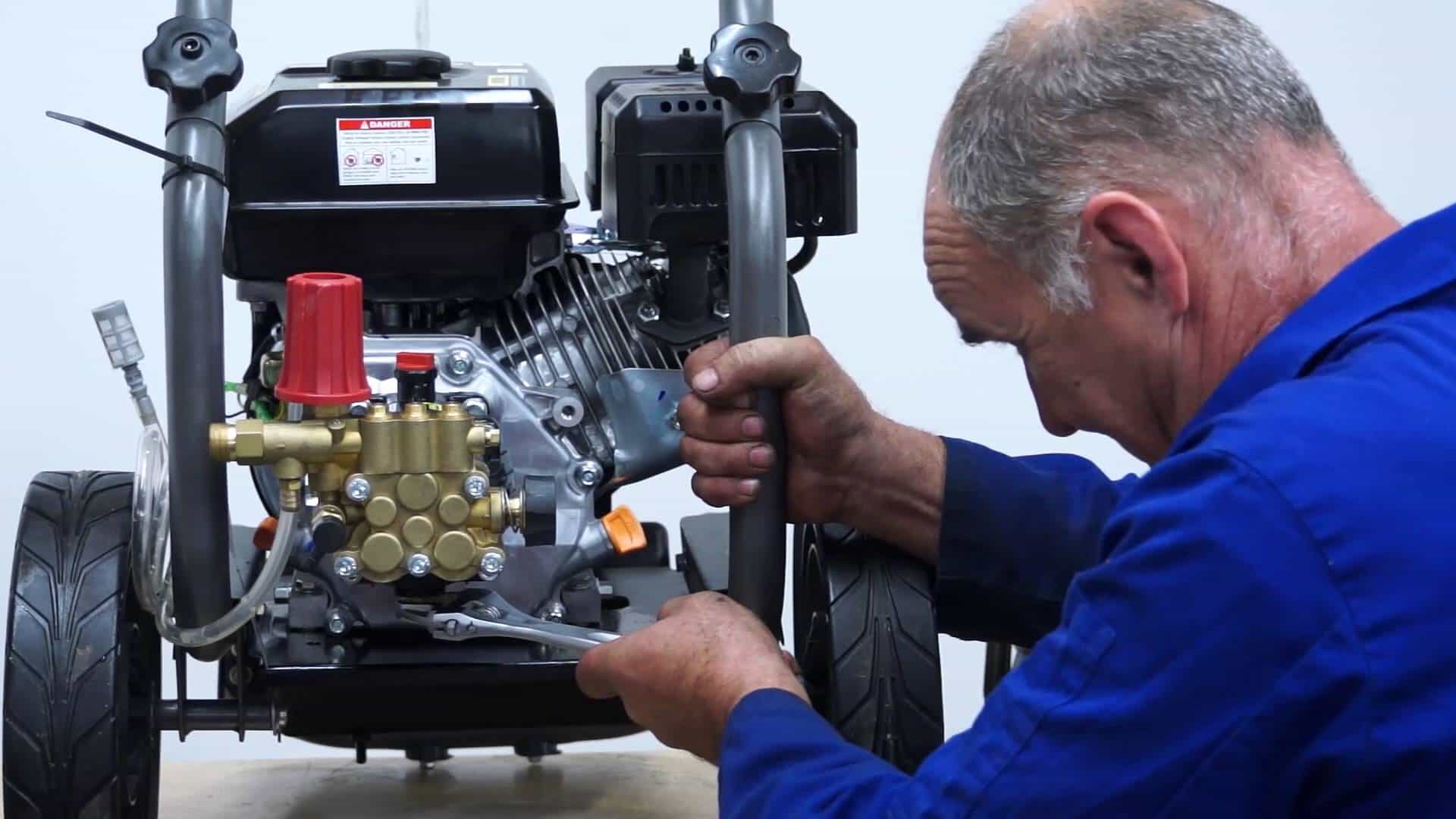Whether you’re engaged in some DIY pressure cleaning, hiring a professional, cleaning large areas or small areas, we’ll outline 6 tips to properly use this powerful cleaning tool. Helping you create spotless surfaces around your property.
1. Put in place these safety measures
You should always keep in mind that a high pressure washer is an incredibly strong piece of equipment. If not used appropriately, it has the potential to break windows, strip paint or even create holes in bricks.
High pressure washers can also cause physical injury and even death. One man in New South Wales lost balance when using a washer and was killed when the water struck his chest inflicting fatal organ injuries.
It’s therefore always sensible to perform the following safety tasks:
- Read the safety manual (no matter how dull it may seem). It’ll tell you everything you need to know about operating the equipment and how to troubleshoot the product.
- Wear protective clothing. Don’t wear thongs or boardies. You’re going to have to protect yourself with full-fledged safety goggles, gloves and steel-capped boots (if you have them
- Don’t use a ladder. Ladders are bad news when it comes to pressure washers. Inertia can blast you back – potentially with a dangerous consequence if you’re standing on a ladder.
- Organise your surroundings. Close the doors and windows. Remove all slip and trip hazards. Sweep excess debris off the surface if possible. Make sure your kids and pets are kept well away.
2. Choose the right spray nozzle
Depending on the pressure washer you use, some come with a single variable nozzle you can adjust between zero to sixty degrees.
Many come with coloured nozzles too, which are coded to their particular power pressure – and you’ll change the nozzles as you go from job to job.
- Black – this is the lowest pressure and is reserved for applying detergents.
- White (40°) – a gentle spray, reserved for more fragile surfaces like windows. Useful for pressure washing car windows and arguably the best for cleaning the outside of your home.
- Green (25°) – a strong pressure but common for use at home. Effective for driveways, outdoor furniture, decks and cars.
- Yellow (15°) – more forceful water pressure which you’d use to remove mildew, paint or dirt. It can also be useful for tougher grime on strong surfaces.
- Red (0°) – this is the toughest pressure. It’s unlikely you’ll ever need to use this – for removing the toughest stains from small areas on metal or concrete. You should never use red for wood.
3. Prepare a washing schedule
Don’t just use a high pressure washer without a plan. Establishing a schedule will help you reduce your waste of detergent, petrol and water (all of which must be used to run your washer).
You should wash:
- Your vinyl siding every two years.
- Your wooden decks once every year.
- Your concrete driveways once every year.
- Your stone and brick alfresco areas and footpaths every three years.
4. Start cleaning with a wide angle before adjusting
If you’re pressure washing a particular surface for the first time, this tip is particularly important.
Begin the wash by holding the spray around 60 to 90 centimetres away from the surface. If that does the job, no need to make any changes.
If it doesn’t clean it, move the spray closer but never go closer than about 15 centimetres. At that distance, if it’s still not clean, use a nuzzle with a stronger force.
5. Follow these steps when pressure washing your car
A high pressure cleaner can be effective way to thoroughly wash your car. But it’s important not to use an overly powerful washer, as you’ll run the risk of stripping the paint or breaking the windows.
- A washer between 1,200 and 1,900 PSI such as the BAR Hot Pressure Cleaner SMART is most appropriate.
- Begin washing your car with plain water and only a low-pressure nozzle (such as the green 25° nozzle).
- Scrub your car exterior with a brush, before rinsing from the top down. Don’t spray inside your car’s engine bay.
6. Take care when washing vinyl siding
When using a high pressure washer to clean the vinyl siding, it’s also best to use a lower pressure or, if you’re applying soap and detergent, the black nozzle.
- Apply soap from the bottom to the top in order to prevent debris from seeping down dry areas and creating dirty streaks.
- It’s important not to let the detergent dry, but you should leave it on your siding surface for a few minutes. Don’t wash when the surface is directly in the sunlight.
- Once done, use a higher nozzle (somewhere between 25° – 40°) and hold the washer about 45 centimetres away from the siding (bottom up) before rinsing from top down.
Using a high pressure washer can be a tremendously effective way to clean various surfaces, but you should always make sure you use the equipment correctly. Contact the experts at Melbourne Jetter Centre with your questions today.


